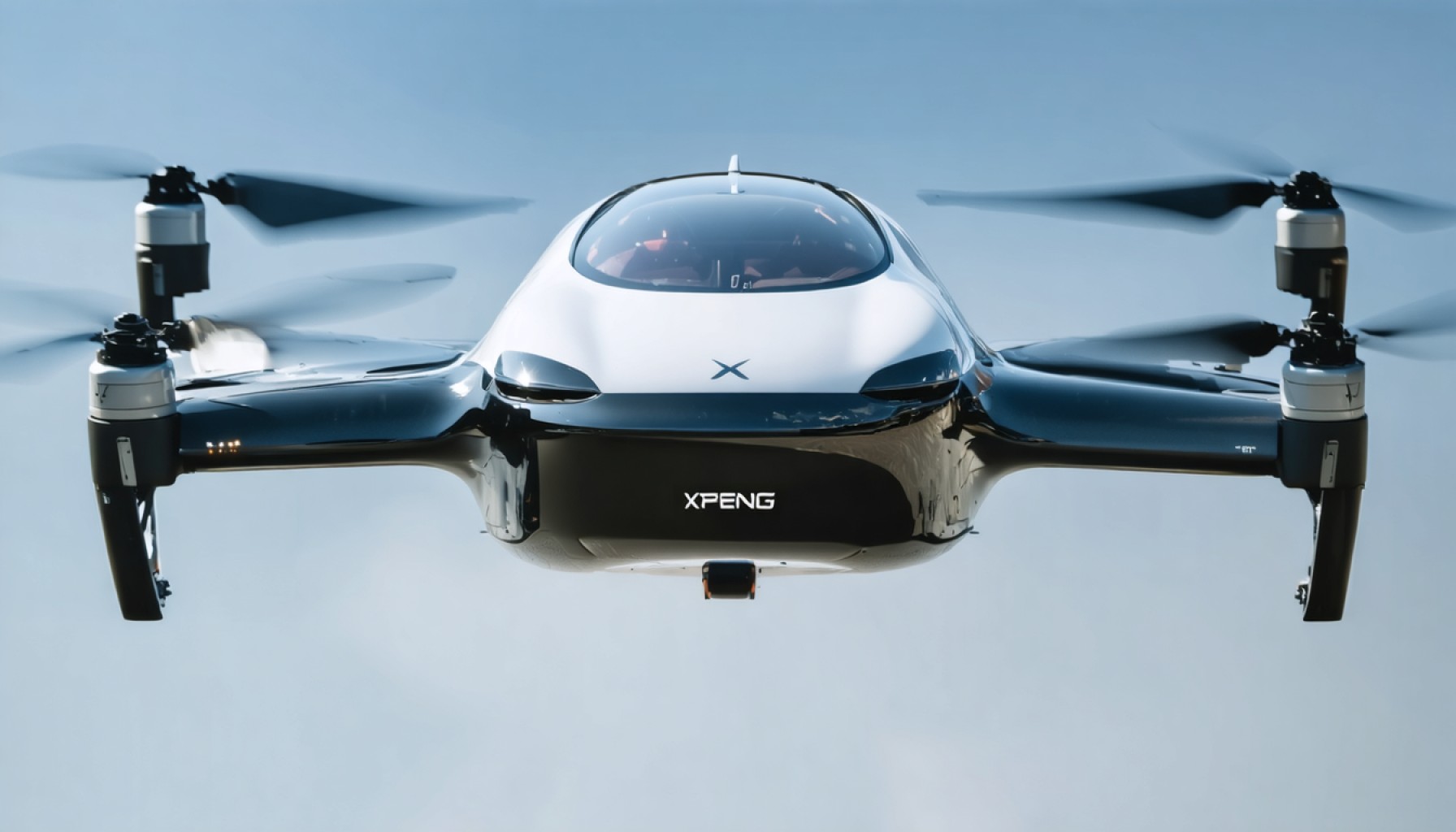- Xpeng Motors is investing RMB 3 billion ($413 million) in its flying car division, focusing on electric vertical takeoff and landing (eVTOL) vehicles.
- The new assembly plant in Guangzhou will be the world’s first for mass-producing eVTOL vehicles, aiming to produce 10,000 units next year.
- The Land Aircraft Carrier, a modular flying car, awaits an airworthiness certificate, promising to revolutionize short commutes with a flight range under 30 kilometers (19 miles).
- Xpeng forecasts the global eVTOL market will reach a $2 trillion valuation in 20 years, significantly impacting the transportation sector and urban development.
- The initiative underscores a future of autonomous, sustainable travel, inviting a shift in how urban mobility and environmental impacts are perceived.
The electric hum of the future is about to get airborne. China’s Xpeng Motors, a trailblazer in the electric vehicle landscape, is setting its sights skyward with an audacious move into the realm of flying cars. Infused with innovation, Xpeng plans to inject a staggering RMB 3 billion ($413 million) into its electric vertical takeoff and landing (eVTOL) craft division this year alone.
Nestled in the bustling heart of Guangzhou, Xpeng’s upcoming assembly plant is poised to make history. This facility will stand as the world’s first factory primed for the mass production of eVTOL vehicles. By next year, the assembly lines are expected to hum with the creation of 10,000 flying machines, propelling us into a new era of transportation.
These aren’t just dreams tethered loosely to imagination. The Land Aircraft Carrier, a revolutionary modular flying car, has its eyes set on the skies as it awaits an airworthiness certificate from the Civil Aviation Administration of China. With a modest flight range under 30 kilometers (19 miles), this vehicle seeks to redefine short commutes and elevate urban mobility.
Xpeng anticipates that the global eVTOL market will soar to a colossal $2 trillion valuation in the next 20 years. This projection accounts for a substantial slice of the global car market pie. The potential to transform not merely travel but urban planning and our environmental footprint underscores the depth of Xpeng’s vision.
This endeavor is more than technological prowess; it is a resounding statement of intent. The horizon is clear—autonomous, sustainable, and efficient travel is no longer just for science fiction. As Xpeng gazes upward, it invites the world to imagine a sustainable tomorrow, where the sky isn’t the limit but a well-traveled highway.
With such pioneering steps, the message is resounding: the future of transportation is not just speeding up—it’s ready to take off.
Is Xpeng Motors Set to Revolutionize Transportation with Flying Cars?
Xpeng’s Bold Move Toward eVTOL Technology
Xpeng Motors, a leader in the electric vehicle sector, is making headlines with its ambitious plans to dive into the electric vertical takeoff and landing (eVTOL) market. With a massive investment of RMB 3 billion ($413 million) this year, their vision is not merely about technological advancement but a transformation of urban mobility.
Key Features and Advantages of Xpeng’s eVTOL Vehicles
– Performance and Capacity: The Land Aircraft Carrier model, Xpeng’s flagship eVTOL vehicle, boasts a range of under 30 kilometers (19 miles). This suits short urban commutes, providing a quick, efficient alternative to conventional road transport.
– Production and Scalability: Xpeng’s new facility in Guangzhou is the first globally to mass-produce eVTOL vehicles, with a target output of 10,000 flying cars next year.
– Sustainability and Innovation: These vehicles align with sustainability goals by reducing traffic congestion and emissions, paving the way for greener urban environments.
How Xpeng’s eVTOLs Could Change Urban Mobility
The introduction of flying cars could lead to a radical redesign of city landscapes. Roads and transport systems might integrate vertical takeoff hubs, and urban planning could prioritize air pathways to optimize air traffic flow.
Market Forecast for eVTOL Technology
Xpeng forecasts a staggering $2 trillion valuation for the global eVTOL market in the next 20 years, reflecting a significant portion of the automobile industry’s anticipated growth. This reflects not just the potential for flying personal vehicles but also broader applications in logistics and emergency response services.
Challenges and Considerations
– Regulatory Approval: The success of air mobility rests heavily on obtaining airworthiness certifications. Xpeng is actively working with the Civil Aviation Administration of China, showcasing collaboration between innovators and regulators.
– Infrastructure Needs: Developing the necessary infrastructure for takeoffs and landings remains a challenge. Urban areas will need to adapt existing spaces or create new ones to accommodate this new mode of transport.
Technological and Environmental Implications
On a technological level, the shift to eVTOL may spur advancements in battery tech, AI for autonomous navigation, and materials engineering to make aircraft lightweight yet durable. Environmentally, eVTOLs offer a substantial reduction in emissions, which is critical as cities work towards climate goals.
Quick Tips for Interested Stakeholders
– Investors: Keep an eye on companies like Xpeng poised at the forefront of automotive innovation. The eVTOL market presents extensive opportunities for growth as infrastructure and public sentiment evolve.
– Urban Planners: Start considering the integration of vertical travel infrastructure within city expansions to stay ahead of future transportation trends.
– Environmental Advocates: Support policies promoting sustainable aviation technologies that could significantly cut urban emissions.
For more information on Xpeng Motors and their innovations, visit the official Xpeng website.
